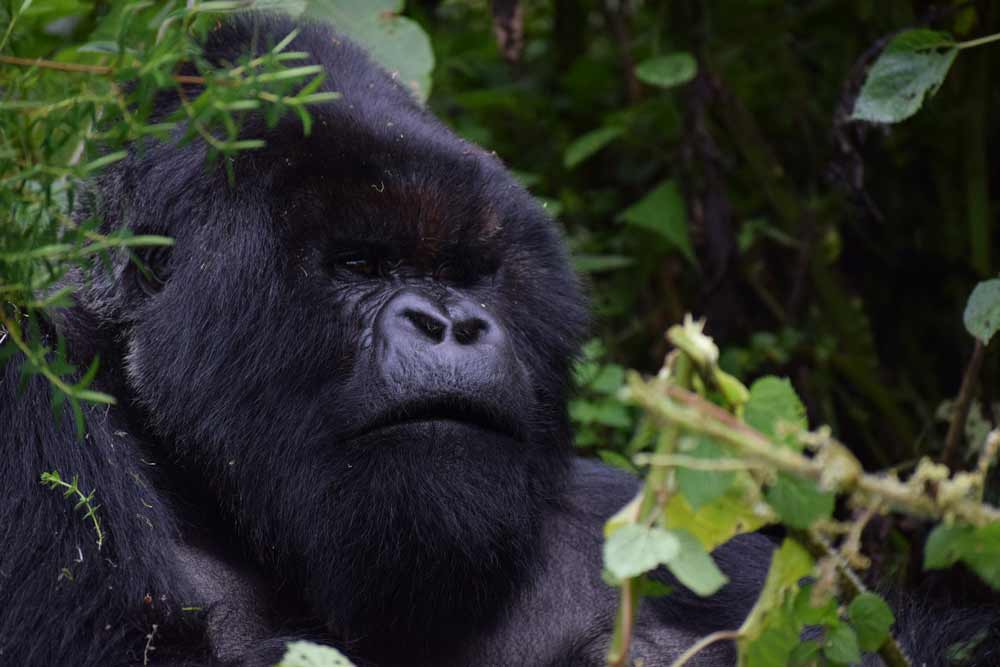There are numerous incredible wildlife experiences to be enjoyed across the globe, from a stay in an Amazonian eco-lodge to a freezing Antarctic cruise. There is also a range of Africa gorilla trekking holidays that can be enjoyed. From a Mount Kilimanjaro climb to a trek in Ethiopia’s Simien Mountains every step of the way is totally Instagrammable. But coming out near the top of the list has to be a trek into the dense central African rainforests in search of the critically endangered Mountain gorillas.
Guide to Gorilla Trekking in Africa

Numbering just over 1,000, the Mountain gorilla population has actually recovered substantially from a low of just 640 individuals in 1989, thanks to a dedicated conservation effort. This great ape depends heavily on tourism for its protection and as well as being a once-in-a-lifetime experience. It is comforting to know that by visiting these incredible animals in the wild, travelers are actually helping to protect them. As this article will explain. Here’s a guide to everything you need to know about gorilla trekking in Africa.
Where are the Gorillas?

Due to their historic persecution, Mountain gorillas are exceedingly rare, and can only be found in a few highly protected rainforest reserves. In Uganda, gorillas can be found in the dense jungles of Bwindi Forest National Park and Mgahinga Gorilla National Park. In Rwanda, there are gorillas in Volcanoes National Park and the least accessible population can be found in the Democratic Republic of the Congo, tucked away in the forests of Virunga National Park. Due to war and political unrest, the Congo population is off-limits to the majority of visitors. Rwanda and Uganda have had past troubles. Fortunately, both are considered relatively stable today. Both recognize the value of safety and tourism and are accessible to visitors looking for an Africa trekking holiday into the jungle.
What Time of Year Should I Visit the Gorillas?

Gorilla trekking holidays operate all year. Gorillas don’t move from their forest home. They can nearly always be found in the national parks where they reside. The region experiences two dry seasons from December to February and June to September. These are generally the most popular times of the year to visit. However, during the wet seasons from March to May and October to December, although slightly more uncomfortable for trekking, the gorillas tend to remain on the lower slopes, where food is more plentiful. This can make them easier to find.
How Much Does Gorilla Trekking Cost?

In order to experience a gorilla trek for yourself, you need to purchase a gorilla trekking permit from the authorities. These need to be purchased well in advance of travel. The price varies depending on which national park and which country you are visiting. Costs generally range from USD$700 – USD$1500, with permits generally costing more in Rwanda than in Uganda. Please note the authorities only issue a small number of permits per day. The reason is to ensure that the gorillas aren’t overly exposed to humans. This is due to the risk of disease spreading through our very similar genes. Although rather expensive, there is a good and sustainable reason. You can be comfortable knowing that the permit cost is used to pay for guides and rangers to protect the gorillas. Your tour operator can usually help you to purchase your gorilla trekking permit.
What Does the Actual Trek Involve?

Gorillas are wild animals. Although the rangers usually have a pretty good idea of where they are, trekking times can vary wildly. You may find the gorillas in an hour or two. Or it could take eight or nine hours of difficult walking to find them. It must be noted that a good level of fitness is required if you wish to go gorilla trekking.
When you do arrive at the gorilla family, your guide will ensure you keep a safe distance. This is done to protect both you and the gorillas. The apes are habituated to a human presence but that doesn’t mean their behavior is predictable. It is important you listen to your guide’s instructions. They will also have detailed information about the gorilla family. They’ll also be able to point out the alpha male, the matriarchal female, and any youngsters in the family.
You’ll watch the gorillas for around an hour before heading back to your meeting point. Make sure to pack a camera and a bottle of water. Don’t forget a pair of gloves to deal with the tough branches and vines of the jungle. It is important to point out that no one considered to be ill-health will be permitted to join a trek. This is out of caution for the health of the gorillas. The minimum age for gorilla trekking is also 16 years of age.
Gorilla Trekking Recap
A gorilla trekking holiday is a once-in-a-lifetime experience. Seeing our closest ancestors in their fiercely protected home and watching them interact with their dynamic family group is an excursion like no other. It is also vital to the survival of the species that travelers continue to fund their protection through gorilla treks. This eco-tourism ensures that gorillas survive in the mountains of central Africa for generations to come.
